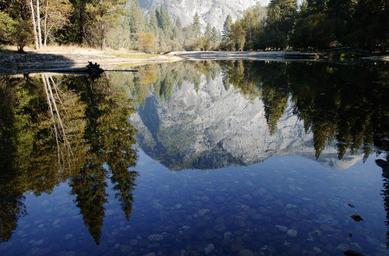Introduction
In a world overruning with visual stimuli, minimalism has emerged as a rejuvenating remedy. This creative technique strips away the unnecessary, focusing instead on the necessary elements that evoke feeling and provoke idea. Exploring Minimalism in Aesthetic Self-Portrait Photography enables artists to explore self-expression while crafting pictures that resonate with viewers on multiple levels.
Self-portrait photography, typically considered an intimate expedition of identity, becomes much more engaging when linked with minimalist concepts. The interaction between space, light, and subject creates a dialogue that goes beyond the superficial elements of portrait designs. In this post, we'll navigate through the nuances of aesthetic photography, discussing principles like contemplative photography, faceless pictures, and how these components contribute to our understanding of identity in art.
What is Minimalism in Photography?
Minimalism describes a design that highlights simplicity and clearness. In photography, it involves decreasing visual clutter to highlight specific topics or themes.
Defining Aspects of Minimalist Photography
- Simplicity: Concentrating on a couple of elements in a frame. Negative Space: The use of empty space to draw attention to the subject. Limited Color Palette: Utilizing monochromatic or restricted colors to develop harmony.
Why Select Minimalism?
Many photographers are drawn to minimalism because it encourages self-questioning. It invites viewers to engage actively with the work rather than passively consuming it.
Exploring Minimalism in Visual Self-Portrait Photography
Incorporating minimalism into self-portrait photography can be transformative. It motivates artists to strip down their concepts to their very essence.
The Function of Self-Expression in Art
Art is essentially about self-expression. When you integrate minimalist aesthetics into your self-portraits:
You Produce Space for Reflection: By eliminating diversions, audiences can concentrate on what really matters-- the feelings communicated by your pose and expression. You Obstacle Perceptions: Faceless portraits can prompt questions about identity and self-perception. You Foster Connection: Streamlined images can evoke shared human experiences.The Intersection of Picture Designs and Minimalism
Understanding different picture styles can boost your minimalist approach.
Types of Portrait Styles
Traditional Portraits: Frequently feature full faces and comprehensive backgrounds. Abstract Portraits: Make use of shapes and colors more than reasonable representations. Faceless Portraits: Focus on body language or environments instead of facial features.How Various Styles Accept Minimalism
While traditional portraits might favor complexity, abstract and faceless styles align more naturally with minimalist principles.
Techniques for Capturing Minimalist Self-Portraits
When venturing into visual self-portrait photography with a minimalist lens, particular techniques can raise your artistry.
1. Utilize Natural Light
Natural light offers soft contrasts that are perfect for minimalistic compositions.
- Experiment at different times of day.
2. Have fun with Angles
Different angles can yield unexpected results; attempt shooting from above or below your subject's eye level.

3. Limit Your Color Palette
Choose one or two dominant colors that resonate with the emotion you wish to convey.
The Value of Unfavorable Area in Visual Photography
Negative area plays a necessary role in minimalist photography-- particularly in self-portraits.
How Negative Area Enhances Composition
- It accentuates the subject. It produces balance within the image.
Contemplative Photography as a Type of Self-Reflection
Contemplative photography encourages mindfulness and deep observation-- perfectly lining up with minimalist practices.
1. Mindfulness Techniques
Before capturing an image, take a moment to breathe deeply and center yourself.
2. Observing Your Surroundings
Notice how light interacts with various spaces; let this inform your structure choices.
Faceless Pictures: An Exploration into Identity in Art
Faceless pictures challenge standard concepts of identity by focusing on the body rather than facial expressions.
1. Why Select Facelessness?
Facelessness permits broader analysis; viewers project their experiences onto the work.
2. Techniques for Developing Faceless Portraits
- Use shadows creatively. Concentrate on body language without revealing facial features.
Integrating Interior Design Elements into Your Photography
Interior style affects not only how we view spaces however likewise how they might be represented through photographic art types such as self-portraits.
1. Choosing Backgrounds Wisely
Select backgrounds that resonate with your style without frustrating your subject matter.

2. Using Textures
Textures add depth while still adhering to minimalist worths-- think fabric swatches or natural materials like wood or stone.
Emotional Storytelling Through Art Photography
Fine art photography extends beyond mere documentation; it has to do with telling stories that link mentally with audiences-- a trademark trait discovered in many minimalist works.
1. Crafting a Narrative
Consider what story you desire your portrait series to inform-- this will guide composition choices and thematic components throughout your work.
2. Using Symbolic Imagery
Employ signs (like things or colors) that bring emotional weight associated to your story's narrative arc-- adding layers of meaning without jumbling visuals.
FAQs
1. What is visual self-portrait photography?
Aesthetic self-portrait photography concentrates on creating aesthetically pleasing images that reflect personal identity while making use of stylistic options like color schemes and composition methods particular of fine art photography.
2. How does minimalism impact self-expression?
Minimalism boosts self-expression by removing away diversions, allowing artists' true feelings and identities to shine through their portraits.
3. Can anyone practice minimalist self-portraiture?
Absolutely! With simply a cam (and even a mobile phone), anybody can start exploring minimalistic techniques by focusing on important components within their frame.
4. What makes faceless pictures significant?
Faceless pictures encourage audiences' engagement by prompting them to interpret body language without counting on facial expressions as cues.
5. How important is lighting in visual photography?
Lighting plays an essential role; natural light often improves simplicity while creating state of mind-- important for reliable minimum compositions.
6. What are some typical errors newbies make?
Common mistakes consist of overcomplicating structures with https://jsbin.com/ziqoxutare too many components or using extremely intense colors that sidetrack from subjects' intended messages.
Conclusion
In conclusion, "Exploring Minimalism in Aesthetic Self-Portrait Photography" opens myriad chances for artists looking for deeper connections in between themselves and their audiences while challenging traditional standards surrounding identity representation through art types like art photography or abstract designs. By embracing simplicity and enabling unfavorable space to play its essential function within compositions-- alongside strategies developed over time-- you'll discover yourself crafting powerful narratives capable not only capturing minutes but likewise stimulating resonant emotions long after seeing those images has actually ended!
So grab your cam! Enter brand-new areas where less genuinely indicates more-- and enjoy as both creativity flourishes along this exciting journey towards authentic creative expression unfold before you!